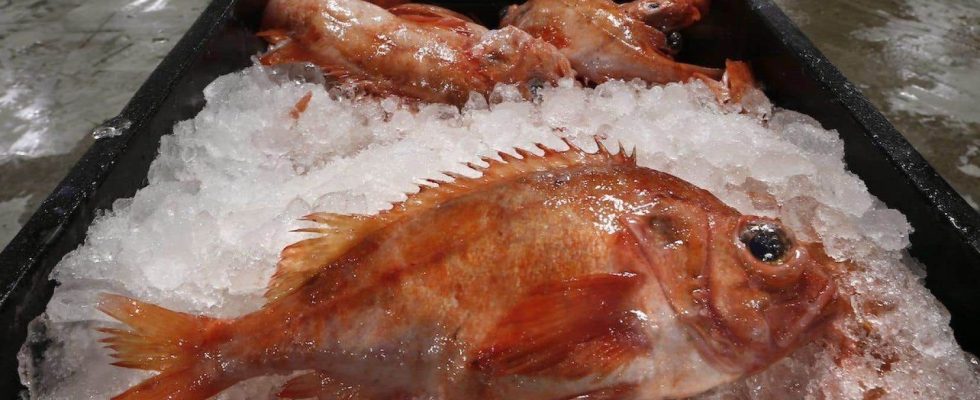This text is taken from Courrier de planet. Click here to subscribe.
Just like farmers, fishermen are on the front lines of climate change. And the meteoric rise in redfish stocks in the Gulf of St. Lawrence is an example of the threats of imbalance hovering over ecosystems.
Ottawa will indeed soon announce the reopening of redfish fishing, a fish which has been under a moratorium since 1995, confirmed last week the federal Minister of Fisheries, Diane Lebouthillier.
The fishermen are rather impatient to know the terms of this resumption and the distribution of licenses. Many criticize politics for taking precedence over scientific data — and politicians for taking up too much of their time.
This is because the overabundance of redfish has affected other fisheries, such as shrimp. As this crustacean shows signs of weakening in the face of climate change, it is also a question of adopting more sustainable fishing models. “The message I’m currently receiving is: ‘Continue to put pressure on the shrimp,’” says Yan Bourdages, captain-owner of a shrimp boat.
“We can clearly see that the shrimp is not doing well. But they also tell me: ‘You just have to fish,’” continues the man who is also a member of the board of directors of the Association of Captains and Owners of Gaspésie (ACPG). The long-awaited opening of the redfish fishery may be the only way to save his business, he says, as moratorium scenarios loom over shrimp fishing.
“Having ecosystem management means exploiting healthy resources so that they remain healthy,” says Mr. Bourdages. He would like to be able to diversify his fishing to avoid “always targeting the same species with large volumes”, he explains.
A groundfish, redfish has been fished for decades, but not always with techniques to preserve the resource, also explains Jean-Bernard Bourgeois, president of the new Association of Redfish Fishermen of the Islands. Bottom dragging should be avoided. The 21 fishermen-owners that he represents advocate instead for a pelagic technique: the trawl (net) moves between the surface and the bottom of the sea, but without touching it.
Reopen fishing, therefore, but not just any way. “If we really want to rebuild this fishery properly, we must not repeat the same mistakes,” says Mr. Bourgeois. There is no question of sitting down again in 5 or 10 years to talk about a closure, he continues.
The best way to ensure the long-term management of these resources, according to him, is to properly distribute fishing licenses and grant them as a priority to fishermen, and not to large outsourced companies that would hire captains locally.
Phenomenon influenced by climate
The spectacular rise of two species of redfish in the Gulf of St. Lawrence is a small miracle in itself, says biologist Caroline Senay of the Maurice-Lamontagne Institute. She helped estimate the biomass at 3.2 million tonnes in 2021 for the Ministry of Fisheries and Oceans.
This fishing has been under a moratorium since 1995 in the region, and “for several years, there were no positive signs: we did not see babies, among others”, indicates Ms. Senay in an interview with Le Devoir . It wasn’t until 2013 that small redfish became large enough to get entangled in nets during his department’s surveys in Gulf waters. His team therefore backwards estimated that the first baby redfish must have been born around 2011, but since they were then the size of a grain of rice, they had not been detected.
Birth – or their rebirth – “is among super rare events”, specifies the biologist. There are therefore a host of factors that could have played a role, including the warming of the waters: 2011 was a year when this rise in the temperature of the Gulf of St. Lawrence was particularly notable. “The Gulf is warming up really quickly,” she said. It has already gained 2°C since then.
The redfish would therefore be “rather winners”. On the other hand, they feed on northern shrimp, among other species. This crustacean has been in decline for around 15 years, because it is poorly resistant to warming and the consequent drop in the oxygen level in the water.
The redfish is also the main predator, and its return has indeed “amplified the decline of the shrimp,” explains Ms. Senay. The decline in its stocks, however, began before the resurgence of this goldfish, she says.
If it has been so abundant for more than 10 years now, why wait so long before redistributing quotas? The ministry’s biologist remains cautious: it is a species that grows slowly and it was necessary to give it time to reach the minimum regulatory size, but also to ensure that ecological fishing methods were developed by studying the behavior of the fish.
For Claudio Bernatchez, president of the ACPG, the answer is rather fundamentally political. He particularly cites as proof that another contiguous fishing zone, unit 2, has never been placed under a moratorium for redfish. He claims that representatives of larger industries (who are not captain owners) do not wish to share this abundant biomass.
“For the moment, our government has unfortunately succumbed to pressure, we are observing a disruption in the St. Lawrence ecosystem that we have never seen before,” he insists.
The next challenge will be to ensure its transformation, find value-added outlets and make it known to consumers. “We don’t want it to be a dumped product or large volumes sent to Asia. We would like it to be a quality product, on plates in Canada first,” concludes Mr. Bourgeois.
